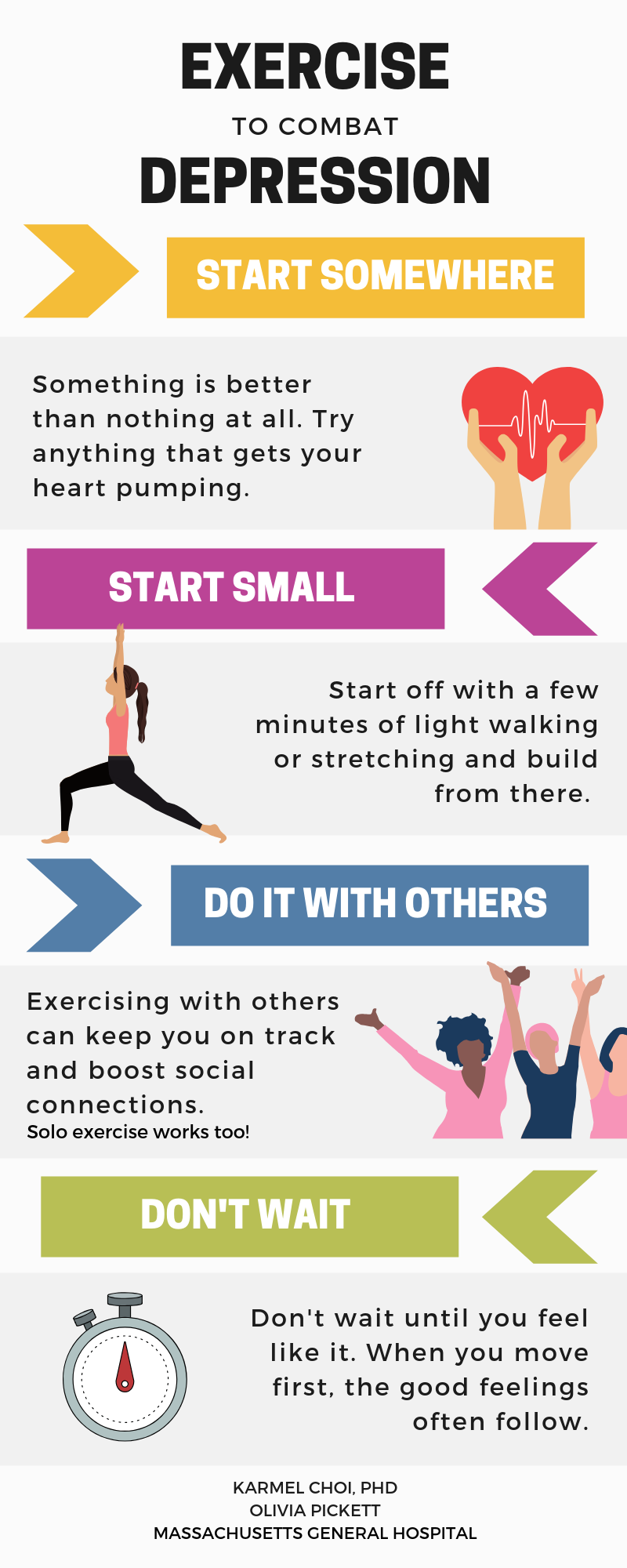This post was reposted from its original version on the Said and Dunn blog.
In this week’s post, we focus on recent work by Dr. Karmel Choi, a postdoc collaborator in the Dunn Lab, who studies the protective role of physical activity for depression. As summarized below, Karmel recently published a research study looking at exercise as a way to prevent depression. However, we also know that exercise can help people who may already experience depression. To learn more about how exercise can help in preventing depression and reducing its symptoms, check out our thoughts below.
Alleviating the personal and societal burden of depression has become an urgent priority around the world. Researchers and clinicians have been working hard to figure out what treatments work best for people who are feeling depressed—medications, talk therapy, and the like. But what about curbing depression before people even become depressed? Compared to what we know about depression and its consequences, we know much less about what strategies could help prevent this condition.
Enter physical activity. We hear often that movement and mood are related. What we don’t know for sure is whether being physically active can actually improve emotional wellbeing and protect you from depression, or whether we simply move less when we feel sad or depressed. It’s possible that both explanations are true, but we don’t know for sure.
Using advances from genetic research to untangle this question, a recent study in JAMA Psychiatry provided the first support of its kind for the idea that physical activity has an important and potentially causal role in reducing your risk for depression.
How much physical activity, you say? The data suggest that if you replaced sitting with about 15 minutes per day of vigorous activity like running or just over an hour of lighter activity like walking, this could potentially cut your odds of having depression by 20%.
Below, we’ve shared some tips for incorporating physical activity into your routine. Although this study focused on physical activity as a way to prevent depression, the good news from other research is that even if you are already experiencing depression, moving helps too. Finding ways to get active is something clinicians often brainstorm with patients who are feeling depressed. Of course, this doesn’t replace the importance of seeing a medical provider to discuss effective treatment options for depression.
Let us know what other tips you have for adding movement into your daily life by leaving a comment or engaging with us Twitter! If you are interested in creating your own exercise schedule and setting weekly goals, check out the Move Your Way Activity Planner by the US Department of Health.

